By Abby Van Selous (COM`24)
When Carsten Grupstra, a postdoctoral researcher in the Davies Marine Population Genomics Lab, arrived at the Newark Liberty National Airport from the Narita Airport in Japan on May 15, he was greeted by U.S. Fish and Wildlife inspectors, all eager to see the “live animals” he said he had packed away in his duffel bag.
But, when he zipped open his suitcase and opened the lid of a Styrofoam cooler, the inspectors seemed altogether unimpressed.
“I took off the top of the cooler to show them the coral, and one guy was like, ‘I hope they’re not spiders, or I’ll be gone,’ and I showed the coral, and they were like, ‘Oh, they’re rocks,” Grupstra said.

While they may look unassuming to people unfamiliar with coral, these corals are unlike many other coral species, according to Assistant Professor of Biology Sarah Davies.
Found in the waters off of Palau, an island country in the western Pacific—and now in aquariums in the basement of Boston University’s Biology Research Building—this species of coral, called lobe coral (Porites lobata), is able to withstand higher water temperatures — and thus have better survival rates in warming waters—than most other coral species.
Corals depend on the photosynthesis performed by algae for their nutrients, but when temperatures get too high, photosynthesis is interrupted and the algae may start producing toxins, harming the corals. The corals may then expel the algae or the algae dies, and the corals then lose their main means of obtaining nutrients. This loss of algae and nutrients causes the corals to turn white—known as bleaching—and they then may start to die.
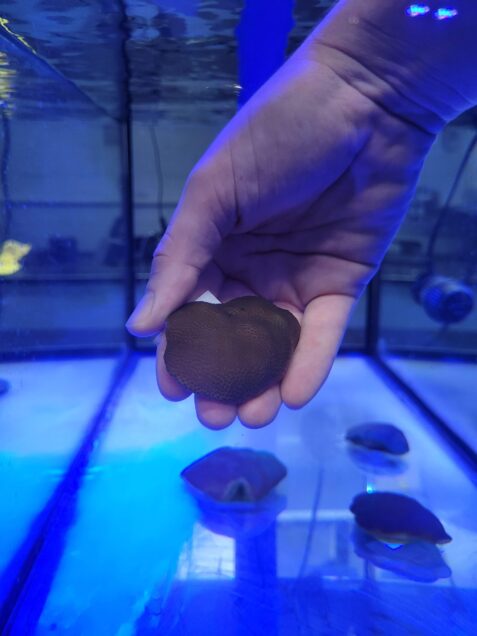
As a postdoctoral researcher in the Davies Lab in 2020, Hanny Rivera, now the Associate director for business development at Ginkgo Bioworks, identified these genetically distinct corals that appeared not to bleach in higher temperatures.
Based on Rivera’s discovery, the Davies Lab, along with the Meyer-Kaiser lab at the Woods Hole Oceanic Institution led by Kirstin Meyer-Kaiser, received grant funding from the National Science Foundation (NSF) to study the properties of these corals and what allows them to stay healthy even as temperatures rise.
This year, water temperatures in oceans worldwide are projected to be the highest they have ever been by a wide margin, according to Grupstra. This means that corals across the globe are likely to experience greater levels of bleaching than in past years. The question is what this means for lobe corals, which appear to withstand bleaching when exposed to higher temperatures.
In the lab, researchers conducted an experiment with lobe coral larvae to determine if this thermal tolerance was heritable or if larvae had different survivorship rates at temperatures often stressful for corals.
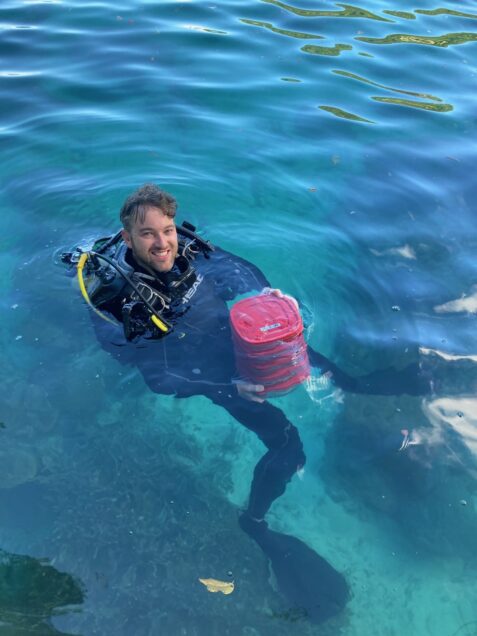
“We increased the temperature of the water to 39 degrees Celsius from 30 degrees, and they survived for five days, and it’s insane.” Grupstra said. “That’s really, really hot. The water’s hot to the touch, it’s not even comfortable when you shower in that temperature.”
Funded by the NSF grant, Grupstra, Davies, Meyer-Kaiser, and other researchers have traveled to Palau to study the corals for several weeks at a time since 2020. During each trip, they would dive for coral, take the corals from the reef and into the lab, observe them for a couple of weeks, gathering data on how they responded to heat, and then put them back on the reef.
But the process of traveling to and from Palau to study the corals on-site was time-consuming and expensive — it took a 40-hour flight, plus layovers, to fly from the Logan Airport to the Newark International Airport to Hawaii or Japan, then to Guam, before finally landing in Palau, using up much of the grant’s funds. In addition, the researchers found that they often had additional questions when the corals were already back in the reef and no longer available to study.

“In the field you can do an experiment. We could heat up a bunch of corals up and see how they respond, and then we have those data and then usually we have more questions,” said Grupstra, who has made the trip to Palau and back three times over the past year. “If we had the corals here, we could walk downstairs and start another experiment, and then we’ll find more data and we’ll have maybe more questions. We can just keep doing experiments in the future.”
So they decided to bring them back to campus to enhance their studies—which required another complicated process, Grupstra said.
Over a sixth month period, Grupstra and the rest of his team worked to get research and export permits from the Palauan government as well as a CITES permit, which must be filed to ensure that the international trade of specimens will not threaten the survival of that species and that specimens will not be illegally exported or imported.
On May 15, once all of the paperwork and permits were accepted, Grupstra packed up 24 lobe corals and took the 40-hour trip from Palau to Boston. Before boarding his flight, he had to call the United States Fish and Wildlife Services, several airports—some airports do not allow you to bring live animals into the country—and to file paperwork for a permit to legally bring the corals into the country.
There were also ethical concerns that needed to be considered before the corals could be collected and brought to the US. Taking corals from reefs is often unethical, and in many cases illegal, when they are removed for recreational or commercial purposes, according to Grupstra.
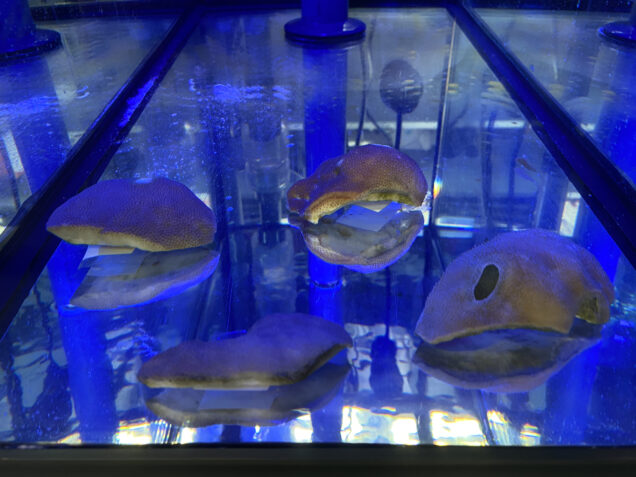
The colonies brought back to BU were taken from parts of colonies that researchers knew would be able to fully recover from the loss, according to Grupstra. They were also brought to the university solely for the purpose of studying them in the hopes of answering research questions that may help protect coral reefs.
Ultimately, the United States Fish and Wildlife Service approved Grupstra’s request to bring the corals into the country, and he was able to pack them up for the 40-hour journey.
“I had a big duffle bag in which I had a Styrofoam cooler, and in the Styrofoam cooler I had these little coral colonies that I wrapped in paper towels soaked with sea water, and I stacked them in there,” Grupstra said. “I packed them in a suitcase and just checked it.”
The corals Grupstra brought back to campus come from three lineages: first, the genetic population that are mostly offshore; second, corals from cooler outer regions as well as warmer lagoons; and third, hyper-specialized corals that are only found in really hot lagoons where many other coral species cannot survive.
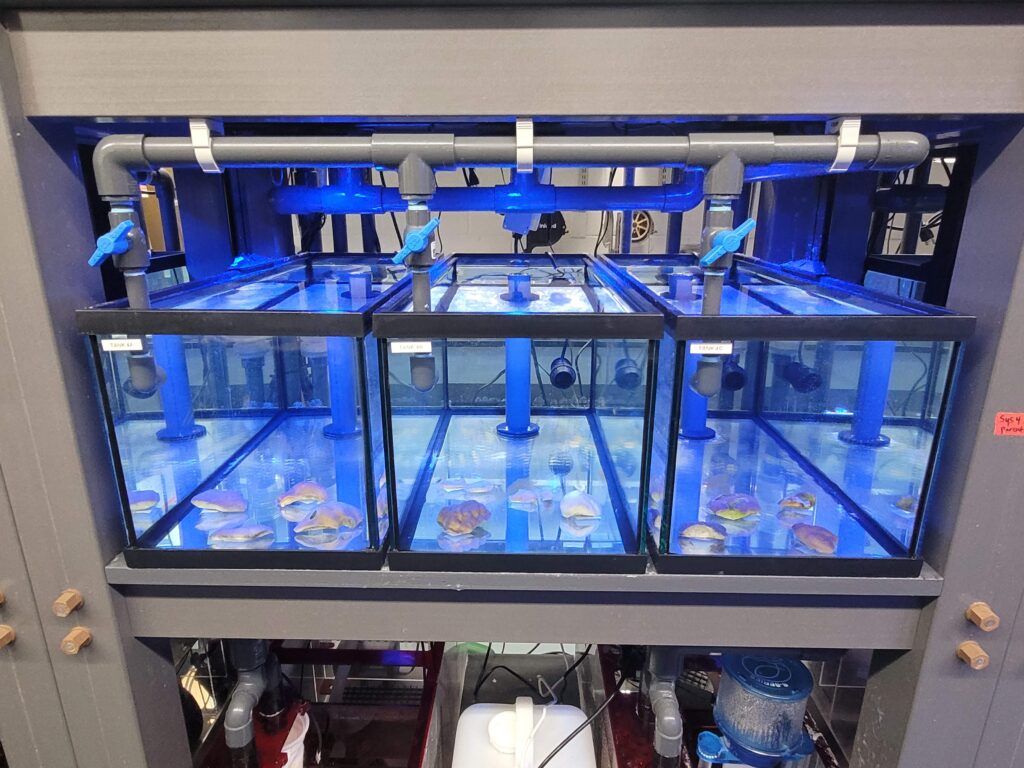 With the corals now on campus, researchers can run experiments and use equipment that they were unable to use in Palau.
With the corals now on campus, researchers can run experiments and use equipment that they were unable to use in Palau.
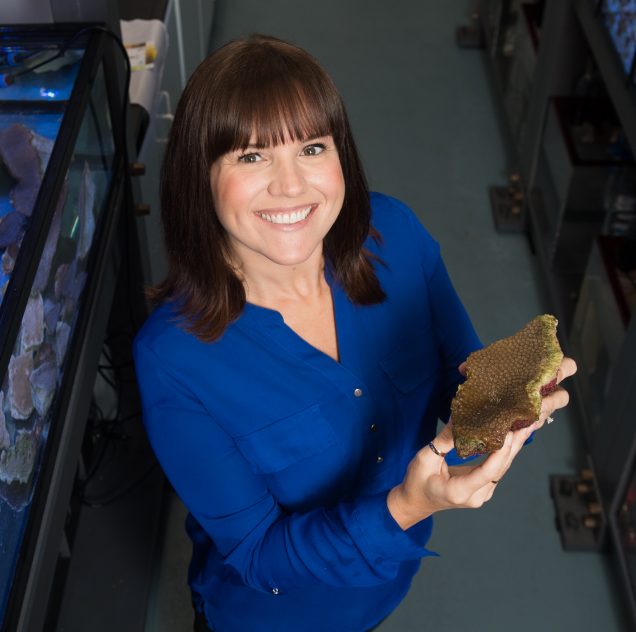
“The work we can do locally is more mechanistic. We can get more specific questions, control for specific variables that we’re interested in to see what happens,” Davies said. “We can do more poking and prodding in more of a hospital setting than watching something in their natural environment.”
To mimic the real-world conditions, the aquarium water is salted and kept at 30 degrees Celsius. The corals are kept in three sets of tanks, separated based on their lineage, and the tanks are lit by a blue light so the corals can photosynthesize with limited stress. Researchers also have control over temperature, lights, and salinity.
“We can see the coral, touch them. We aren’t limited by scuba diving limitations,” Davies said. “We can disentangle things slowly and meticulously, which you could never do in the field.”